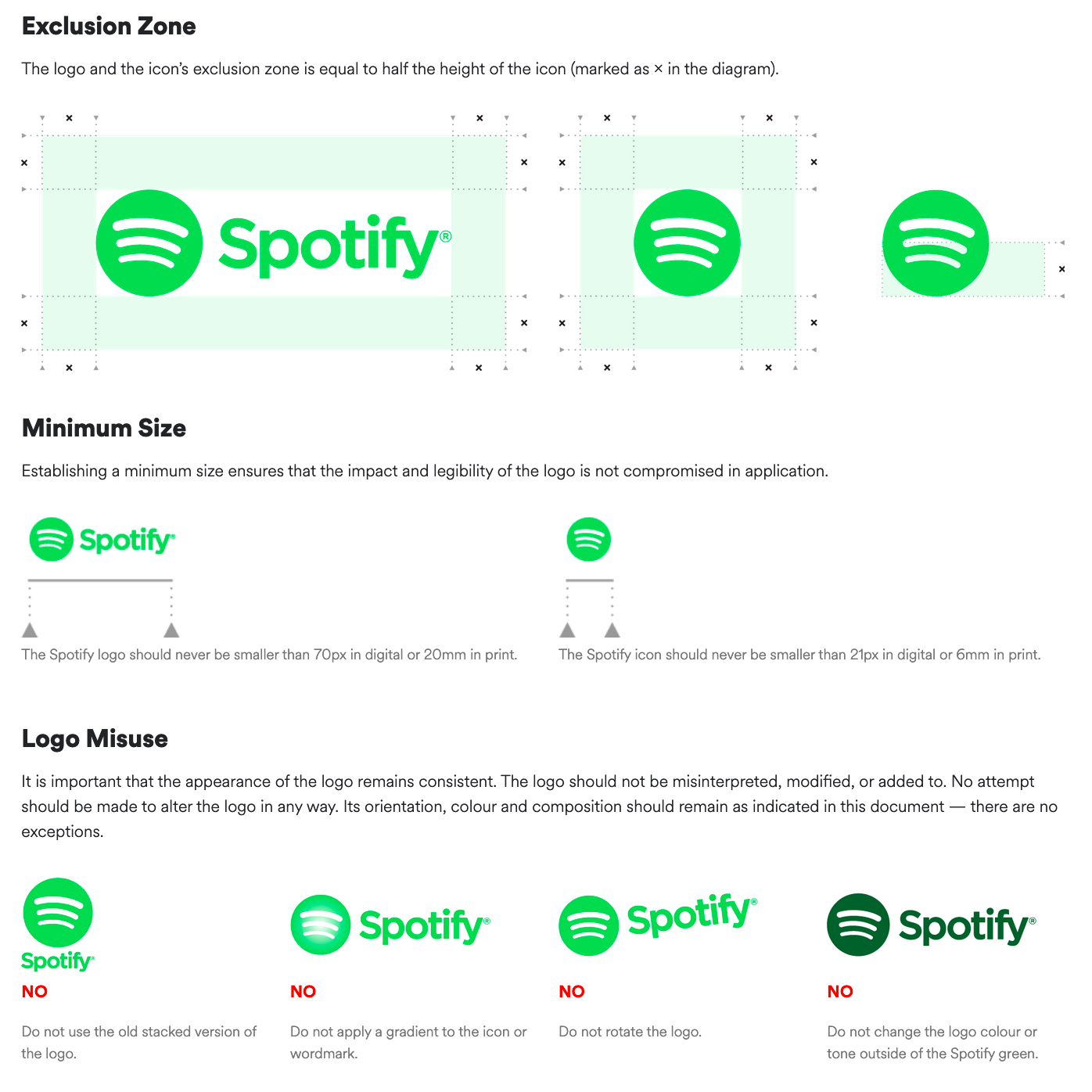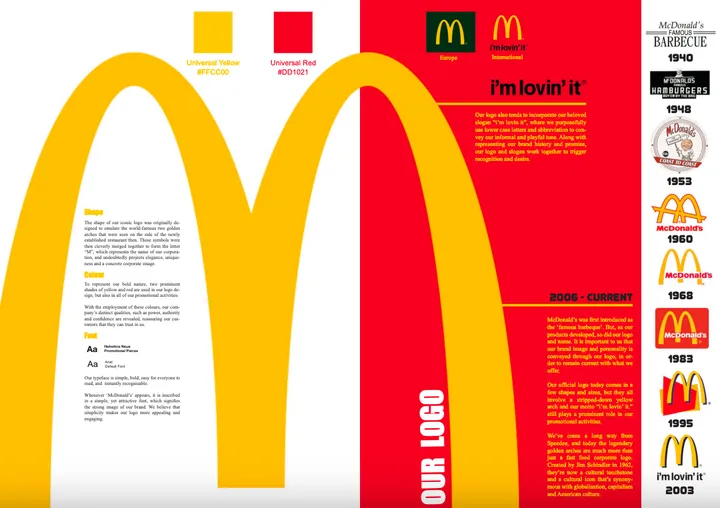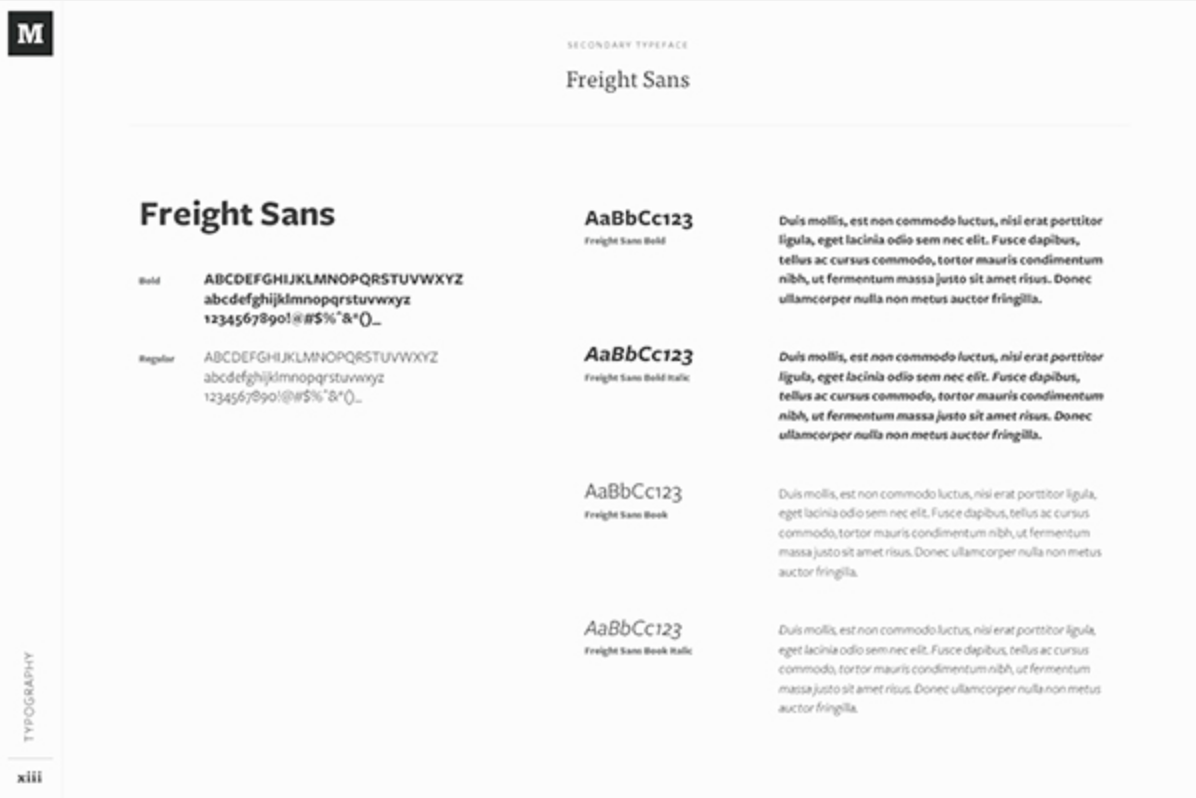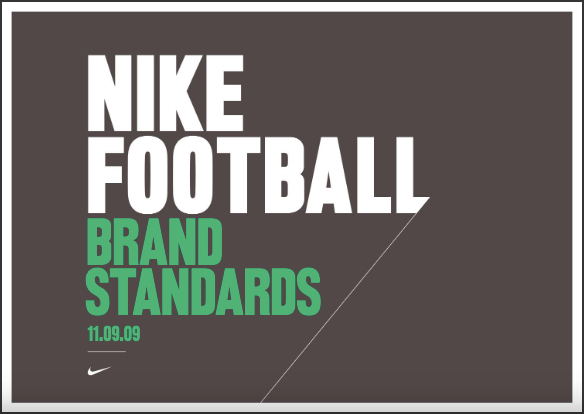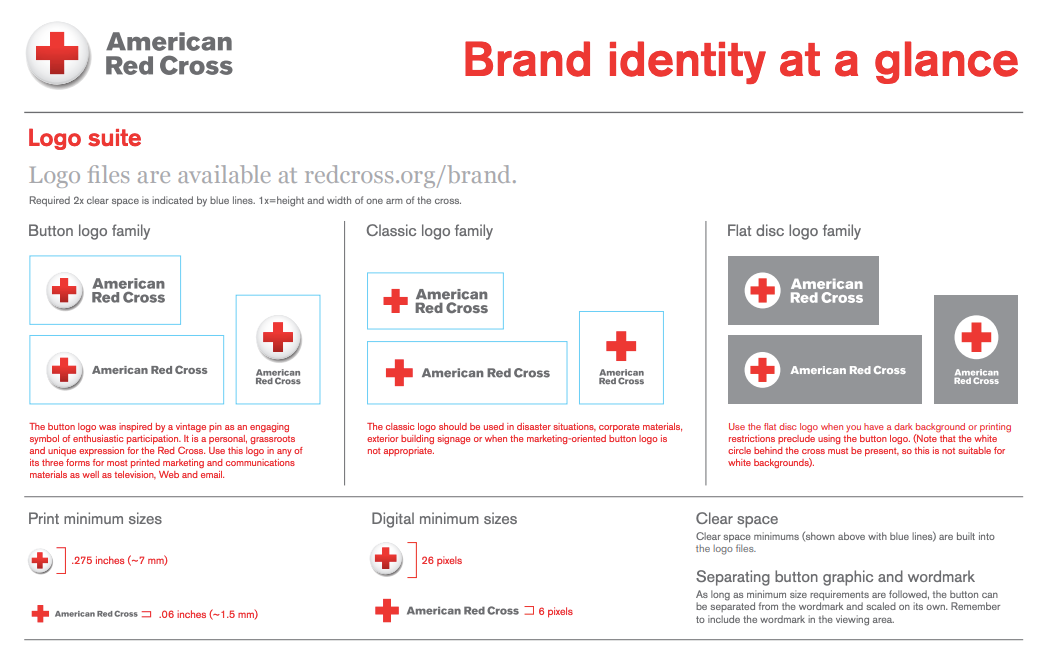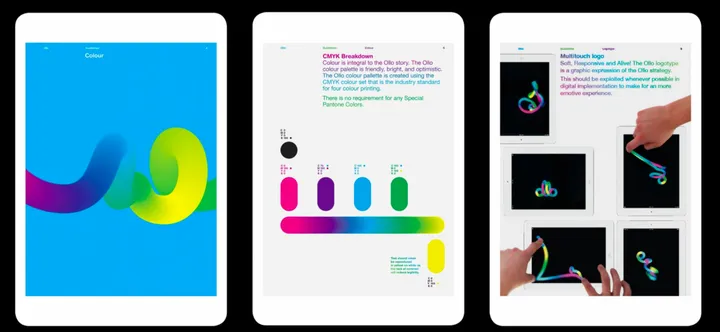As a marketer, your daily challenge is finding ways to develop brand awareness.
Developing a strong and unique brand identity requires a framework that will help with brand coherence—you need to make sure all messaging is consistent, both in terms of content and look, setting the tone of your brand’s voice.
This includes your brand’s social media presence, the business cards you are distributing at events, your press releases and more. A consistent brand identity is also key to gaining the trust of your (potential) customers and target audience.
You can avoid marketing mishaps and make sure every team member and department is presenting your brand the right way by creating a smart document outlining distinct guidelines for maintaining brand identity across all aspects of the business. This is your brand book.
If you need a clearer definition of what a brand book actually is and are wondering who it should be targeting and why it is so essential to a branding strategy, follow this guide.
We will be telling you everything about creating a brand book, the elements it should contain and practical ways to make sure yours is perfect.
But first… what is a brand book?
A brand book is a document that defines every aspect of a brand’s identity and explains how it should be represented. It also defines what makes your brand unique.
The idea here is to establish the ways in which your brand’s visual identity is built and how it should be used by both your team members and external contractors (freelance designers, marketing agency etc.)
A brand book gives your brand a framework of cohesion and consistency and defines its personality. It applies to both print and digital content (website, flyers, invoices, social media pages, print ads etc.)
And by now you’ve probably guessed that it should be part of every communication strategy.
Also called brand bible, brand style guide or brand guide, a brand book should go into every detail of your strategic guidelines when it comes to:
- Your brand’s visual identity (logo, colors, fonts etc.) and its graphic universe
- Its editorial identity (tone of voice, keywords, communication formats etc.), which is how your brand will express itself
- As well as its mission statement, its history and its values. These are all the elements that make your brand unique.
What makes a brand book different from a graphic or editorial charter is that it includes information on a brand’s values, corporate culture and personality.
A brand book will help you make sure all aspects related to your brand are being respected across every communication channel. Read out what is CSR and why it is important for your brand's communication.
Its target audience is wide and includes:
- The in-house design, copywriting or sales teams. A brand book also plays a role in internal communication and brand content.
- Your clients, associates, media partners etc. when it comes to external communication
- … And even the general public. Everyone should be using your brand image the way it was intended.
A brand launch video is an efficient way to convey what your brand is about : opt for a clear narrative and an engaging use of visual elements, and you've got yourself a killer video ! Here are 13 best brand videos examples to inspire your creative process. You can also start by creationg your brand introduction video.
Why you should definitely create your own brand book
Of course a brand book is meant to be used and is part of a brand’s strategy.
It has many benefits as it aims to:
- Create a consistent brand identity. A brand book ensures consistent messaging across all communication channels. It means that logo usage is correct both internally and externally, that every graphic and text-based element is standardized and that your brand content will be as impactful as possible when making a logo. It is the key to communicating as a consistent and trustworthy brand.
- Define a brand’s visual identity. A brand book contains a definition of the visual aspects of a brand, including its logo and the colors or fonts that can be used. You know how Coca-Cola is linked to the color red? This is what we mean here.
- Increase brand awareness and differentiate a brand from its competitors. Writing a brand book will help you establish your expertise all while defining what makes you different from your competitors.
- Improve brand positioning. Of course your brand is much more than its logo—it also has its own values, tone of voice and company culture. And all the things you and your team members believe in should be highlighted in your brand book.
- Strengthen team spirit. A brand book is an excellent way to help every team member understand what your brand is about. You could also share your brand book with a potential agency to make sure their proposals and ideas are in line with your expectations.
What should be included in a brand book
Every brand book should include a specific set of elements.
Here’s a list of what we recommend adding as well as our tips to make it as comprehensive as possible.
A general presentation of your brand
Before diving into specific brand guidelines, you should start with an introduction that includes some key components:
- Who your brand is and what its mission is.
- Your brand’s personality. Who would it be if it were a person?
- What makes your brand unique.
- Your brand promise. Be short and clear here. Check out this example by Wolf Circus for inspiration—your promise should be easy to understand and remember. Avoid using jargon and clichés.
- Your vision. What is your general direction? What about your long-term goals? Like Glossier, you should define your strategic vision as it will demonstrate your ability to make meaningful decisions for your brand.
- Your values. What principles and causes does your brand stand for? These values should reflect your vision and help differentiate your brand from its competition.
- Your products or services. Whatever your industry, you should provide an overview of the products or services you provide. As an example, check out Atlassian and its mini product cards that give a concrete idea of what each feature does and if you want to dive deeper discover our guide on how to create amazon sponsored brand videos.
- Your target audience. Who is your brand trying to address? How does it provide a solution to their issues or needs? This is where you could mention your buyer persona or ideal customer profile. Take a look at how I Love New York did this.
- Your history. Explain how your brand started and include some personal anecdotes. Coca-Cola’s brand book is a stellar example! This will help you connect with your audience and team members as they will be able to identify with your brand. Just remember everything you include should be true.

PlayPlay Pro Trick
A powerful brand presentation should be based on storytelling. Describing your brand in a personal way is the key to being different and leaving a lasting impression. If you are looking for inspiration read our article on how to make a presentation.
A graphic charter
Your goal here is to provide a thorough description of your brand’s visual identity and the way its various elements should be used.
Make sure this part of your brand book includes the following elements:
- Your brand logo and its declinations. To make sure your logo is never used incorrectly, you should be clear about the guidelines that should be followed. Spotify, for example, specifies its dimensions, how it should be placed, how much space should be kept between different elements as well as its various versions (B&W or color, with or without brand name etc.)
- Its tagline. Just like your logo, your brand tagline should be used according to specific rules. You can define these rules by asking yourself where the logo should be placed, whether the logo and your tagline can be used together, its minimum dimensions, background, color etc. As an example, McDonald’s has different rules for every country.
- Your color palette. Did you know that using a signature color can generate a 80% increase in a consumer’s recognition of your brand? This is why your brand’s color palette should be consistent. Think logo, products and digital content alike. This will make your brand image more sustainable and will allow your target audience to identify it more easily. Our tip: do it like Netflix and include as many details as possible (business name, CMYK / RGB / HEX / Pantone codes, primary and secondary colors, variations etc.) You should also specify the background colors that can be used depending on the communication platform.
- Your fonts. This is where you should name every font that can be used in relation to your brand. We recommend including concrete examples that will show the ideal letter and line spacing, the way a title or a paragraph should look like as well as what font should be used for each element. Take a look at Medium’s brand book for inspiration. Remember to include alternative options in case your official font cannot be imported.
- Illustrations and icons. Make a list of the visual elements that can be used when referencing your brand. This includes photos, illustrations, icons and more. Explain how they should be formatted. Here again, we think Glossier did a great job, so check out their brand book. Some of the questions you should be asking yourself include: how should images be edited? What colors should be used? How should the logo be integrated? Should some graphic elements be avoided altogether? Should a specific aspect of your brand be more prominent?

PlayPlay Pro Trick
To make sure your brand is represented the right way, having a “Do’s & Don’ts” section makes a lot of sense. It will provide your readers with concrete examples, which will make it easier for them to use all brand elements correctly.
Editorial guidelines
While a picture is worth a thousand words, be sure to also include your preferred language elements as they will help with brand positioning. Your brand book should specify the following editorial aspects:
- Tone of voice, editorial style, brand language. This includes the adjectives describing your brand’s principles and values, your preferred grammatical and punctuation, the specific words that reflect your brand’s identity etc. These will help define a tone of voice.It can be helpful to start by identifying the words you like or do not want your brand to be associated with. As an example, Skype does not want to be linked to the words “telephony” and “bill”—preferring “free” and “calls” to be used instead.
- What editorial formats should be used for official communication. The goal here is to help your team members and partners to create official documents for external or internal use that will be aligned with your brand. One tip: avoid issues related to layout by including concrete examples of PowerPoint presentations, PDF documents, blog articles, press releases or e-book in your brand book.
11 tips for an efficient brand book
Now that you know all the elements that make a professional brand book, it’s time to find out how to make it really great and bring your mission vision to life.
Check out our 11 trusted tips for an efficient brand book and be ready to create your own powerful marketing tool.
- Identify your brand book’s target audience: Before you get to work, you should think about who will be actively reading and using your brand book. This will help you avoid including irrelevant information. For example, should a brand book made for external use feature a section addressing your team members?
- Keep it simple. Everyone should be able to understand your brand, what it is about and how its visual and editorial elements should be used. Go straight to the point here and avoid technical terminology at all costs.
- Make it visual and attractive. Don’t overdo it of course, but a brand book that depicts your brand in a visual way will be more attractive to its readers. It is also your chance to display your brand’s creativity.
- Think of your brand book as a representation of your company. Obviously, a brand book should be an accurate reflection of your brand. This means its structure itself should reflect your values and your brand’s identity. Check out how Google’s brand book is perfectly aligned with its usual colors, fonts etc.
- Always provide value. The aim here is to create a document that will actually be used. It should be useful to its target audience and provide concrete information regarding how your brand should be represented across all channels. If your brand book includes specific information regarding your logo and Photoshop, it might make sense to add a dedicated tutorial.
- Make sure your brand book is easy to navigate. As this document is likely to be fairly long, make it easy for your readers to easily find what they are looking for. Cisco, for example, has a brand platform with its dedicated menu.
- Update your brand book regularly. Your brand is in constant evolution, so your brand book should reflect that too. If you’ve got a new logo, color palette or font, be sure to update your brand book immediately.
- Make it easy to find your brand book. The people who might need to use your brand book should be able to find it easily. You could upload it and add a link to your website or have a dedicated section in your intranet.
- Involve your teams. Giving team members the opportunity to contribute to creating your brand book will make them feel closer to the brand. They will also be able to provide you with insights and improvement ideas. This will help you improve your brand book as you go.
- Anticipate potential questions. Consider adding an FAQ section to your brand book with around 20-30 questions your readers might have after reading your brand book. Remember to include a way to contact someone about it as this will make you seem more trustworthy and approachable.
- Make a list of all communication channels that could be used. Examples include blog articles, website, social media, business cards, packaging, press releases or even brand stationery for invoices etc. If your brand produces video content, remember to mention where and when your logo should appear, whether a specific outro should be included and even examples of approved CTAs.
Unlock your potential with PlayPlay's video maker, tailor-made for businesses seeking seamless branded content video creation. PlayPlay's intuitive tool empower you to effortlessly create business videos for all your platforms.

PlayPlay Pro Trick
Great brand book examples to inspire you
Uber
Nike Football
LinkedIn
Croix-Rouge
Ollo
Well done—you now hold the keys to creating a comprehensive, coherent and attractive brand book that will help you communicate even more efficiently!
Looking for a video tool for your next creation? Try PlayPlay!


